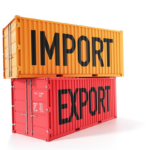China’s government is also said to be increasing financial support for state-owned banks to respond to the ongoing distress in the real estate market and outside pressure to raise tariffs. China will probably provide tier 1 capital support to the Industrial and Commercial Bank of China and Agricultural Bank of China, said one analyst. This comes just days after a Rmb520bn ($72bn) intervention in the banking sector on Sunday.
Banking system and capital in scenario
On March 30, four state-owned financial institutions — the Bank of China, Bank of Communications, Postal Savings Bank of China and China Construction Bank — explained in filings to the stock exchange how they planned to raise vast sums of capital. Specifically, the Bank of China said it would increase Rmb165bn, the Bank of Communications Rmb120bn, the Postal Savings Bank of China Rmb130bn and China Construction Bank Rmb105bn. This total consists of Rmb500bn from the Ministry of Finance and the rest from state owned entities such as China National Tobacco Corp, China Mobile Group and China Shipbuilding Group, according to reports. These shares, traded in Renminbi (Rmb), will be issued and traded through the Shanghai Stock Exchange, after an initial five-year lock-up.
Context of Economic Headwinds
The Chinese government’s move to bolster its state-owned banks comes as the country’s real estate sector continues to be a problem. There has been an adjustment period in the property market that has put some strain on financial institutions. So, you’ve got tariffs coming in and tariffs coming down, which adds another complication to an already-complicated environment. It reflects the government’s willingness to back its banks through economic challenges, the next two largest lenders by asset size are ICBC and the Agricultural Bank of China, the analyst said.
Stability — further support for Tier 1 capital
Tier 1 capital is a bank’s core equity capital, it represents the most liquid and highest quality percentage of a bank’s capital reserves (a function of the bank’s total capitalization) as it has components which can absorb losses without putting the bank into a state where it needs to cease trading. The Chinese government aims to bolster these major investors’ capital adequacy ratios by offering Tier 1 capital assistance for them. A solid capital base is vital for banks going through a slump across the banking sector that could arise from increased loan defaults, be it due to troubles in the real estate sector or an economic slowdown linked to trade tensions. This injection of capital, in turn, can enable banks to continue to provide credit, helping to stimulate economic activity.
Effects on the Banking Sector
The massive capital pumping into some of China’s biggest state-owned banks reflects the government’s resolve that its financial system will remain on an even keel. It illustrates a concerted activity to plug the banking sector, as different state-owned corporations aid the Ministry of Finance in putting up this capital. While these funds are likely looking to score a profit as quickly as possible, the five-year lock up on the new shares suggests a long-term perspective on behalf of the investors and a willingness to help the banks build their balance sheet and weather the crisis. Coming in the wake of the recent announcement of a much-expected cash infusion into two other large Chinese banks to stabilize its property sector, extending such support carries major meaning, as it would boost the capital position of the biggest players in the Chinese banking industry, as well as affect the entire system’s stability as its system continues to lean on itself as much as possible amid present economic crises.






